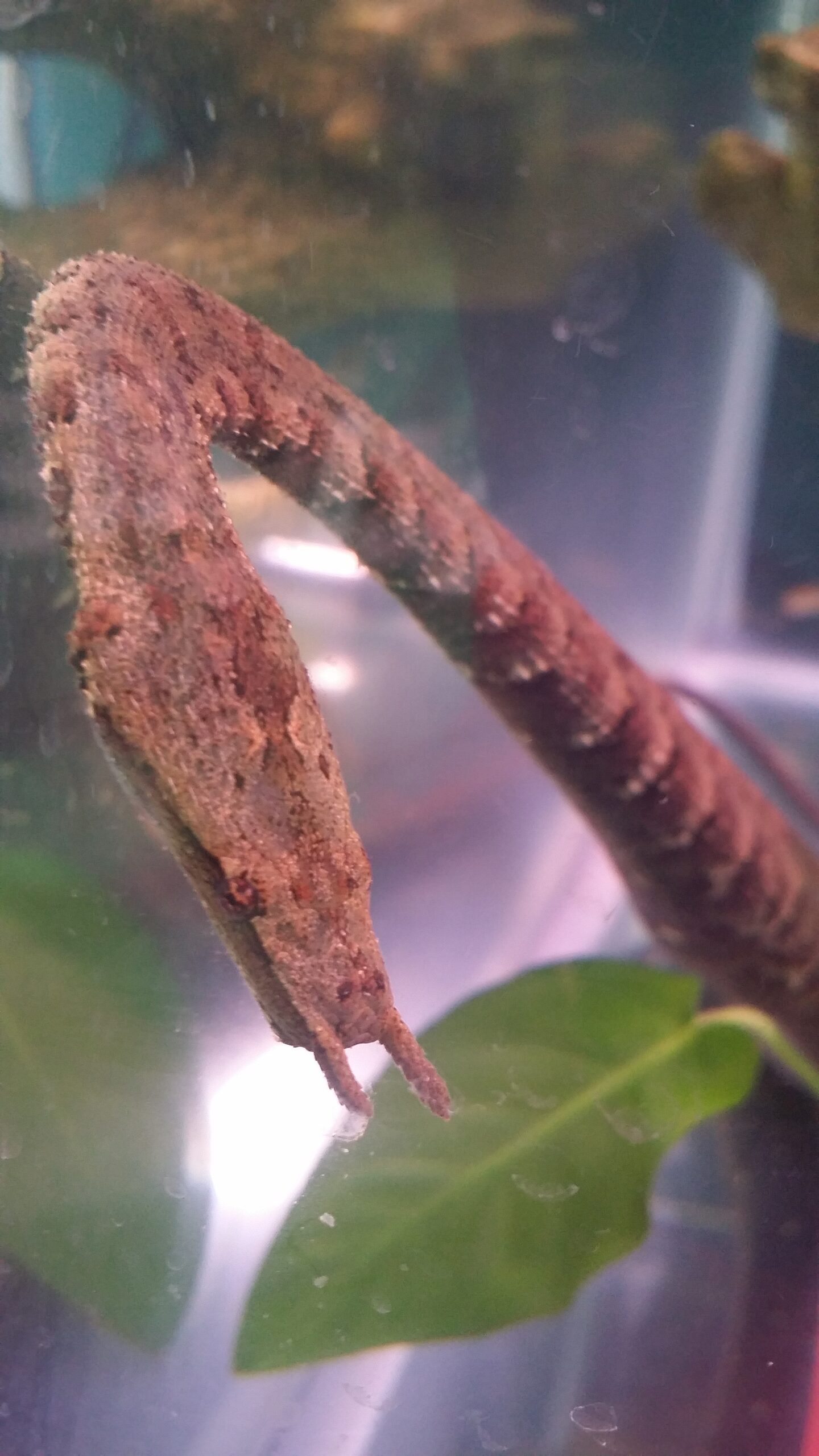Beneath the tranquil surface of slow-moving rivers and wetlands across the globe, a remarkable predator lurks among the roots of floating vegetation. The water snake that lives beneath floating river plants represents one of nature’s most fascinating examples of specialized habitat adaptation. These serpents have evolved unique characteristics that allow them to thrive in an environment between water and air, creating a hidden world that few humans ever glimpse. Their story intertwines ecology, evolution, and survival in a delicate aquatic ecosystem that faces increasing threats in our modern world. Join us as we dive beneath the lily pads and water hyacinths to discover the secretive life of these remarkable reptiles.
The Floating Forest Ecosystem
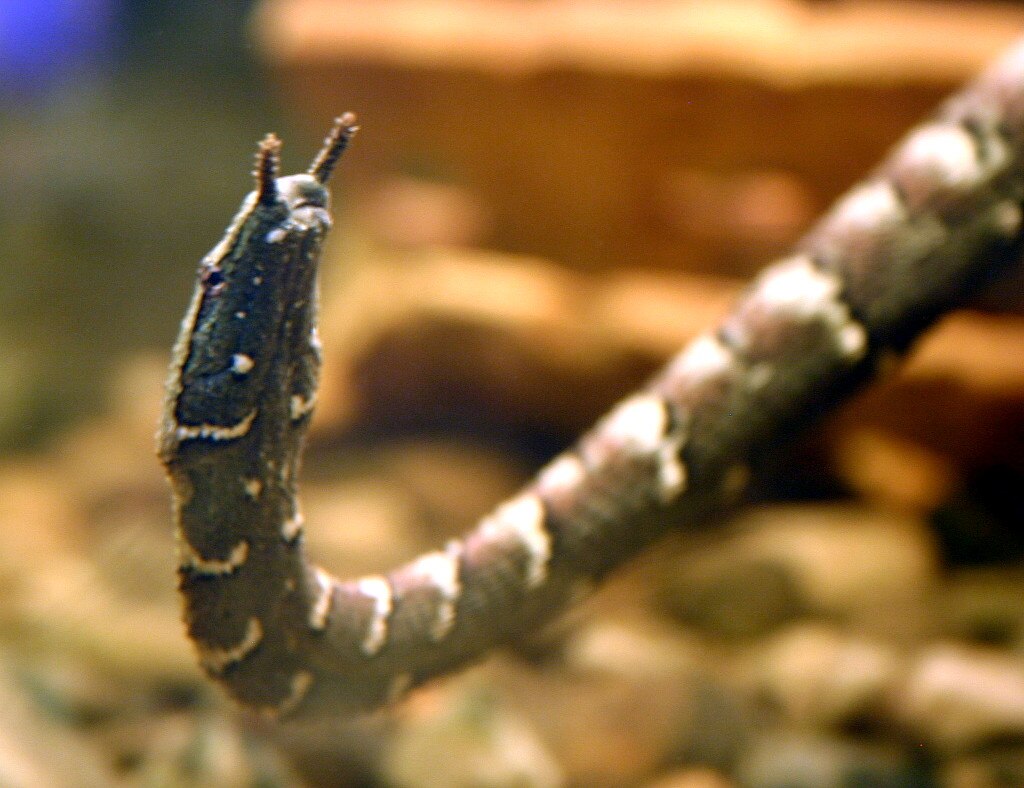
Floating river plants create a unique microhabitat that serves as both shelter and hunting ground for specialized snake species. Plants like water lettuce, water hyacinth, and water lilies form dense mats on the water’s surface, their trailing roots creating an underwater forest. This floating ecosystem provides oxygen, temperature regulation, and critical structural complexity that supports diverse aquatic life. The plants themselves absorb nutrients from the water column while their roots harbor microorganisms, small invertebrates, and fish fry, establishing a rich food web. For the snakes that have adapted to this environment, these floating gardens represent an evolutionary niche that offers both protection from predators and abundant hunting opportunities.
Tentacled Snake: The Ultimate Ambush Predator
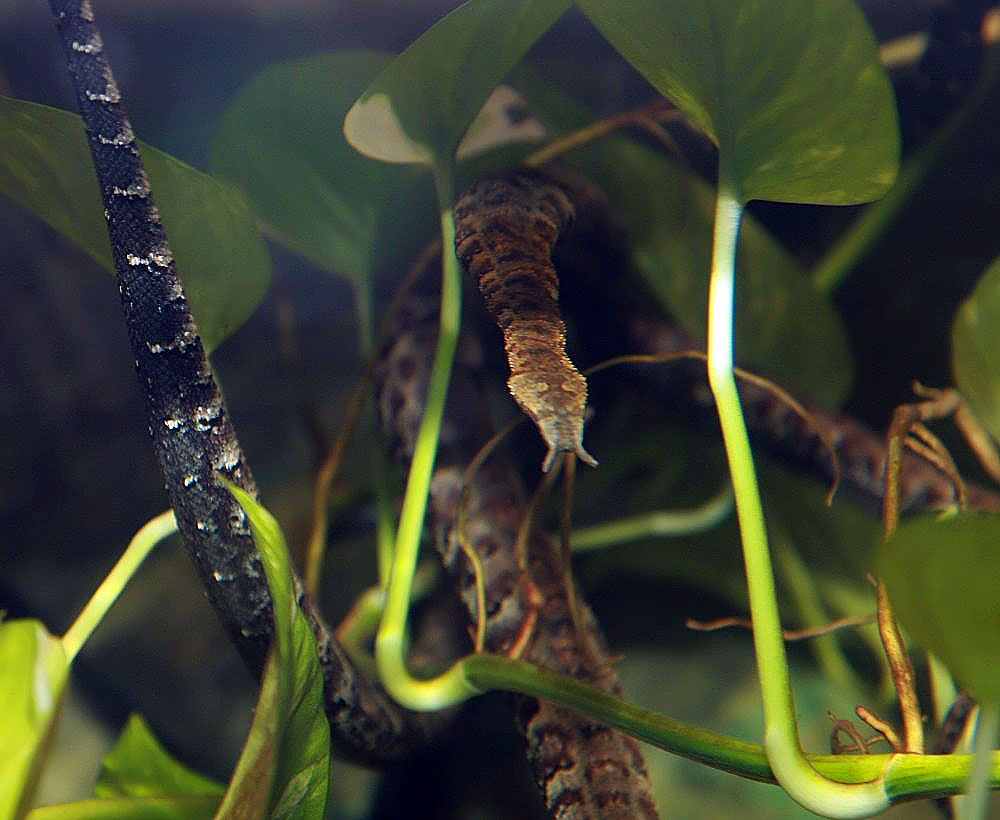
Among the most specialized snakes inhabiting the underside of floating vegetation is the tentacled snake (Erpeton tentaculatum), native to Southeast Asia. This remarkable reptile possesses two distinctive tentacle-like protrusions on its snout that serve as sensory organs, detecting the movement of fish swimming nearby. Unlike most aquatic snakes that must actively pursue prey, the tentacled snake remains motionless beneath floating plants, its body forming a distinctive J-shape ambush posture. When a fish approaches, the snake doesn’t lunge at the prey but instead creates a slight pressure wave by contracting its muscles, causing the fish to perform a predictable escape response right into the snake’s waiting jaws. This sophisticated hunting technique, which happens in less than 20 milliseconds, makes the tentacled snake one of the most efficient underwater predators in the reptile world.
Rainbow Water Snake: A Colorful Adaptation
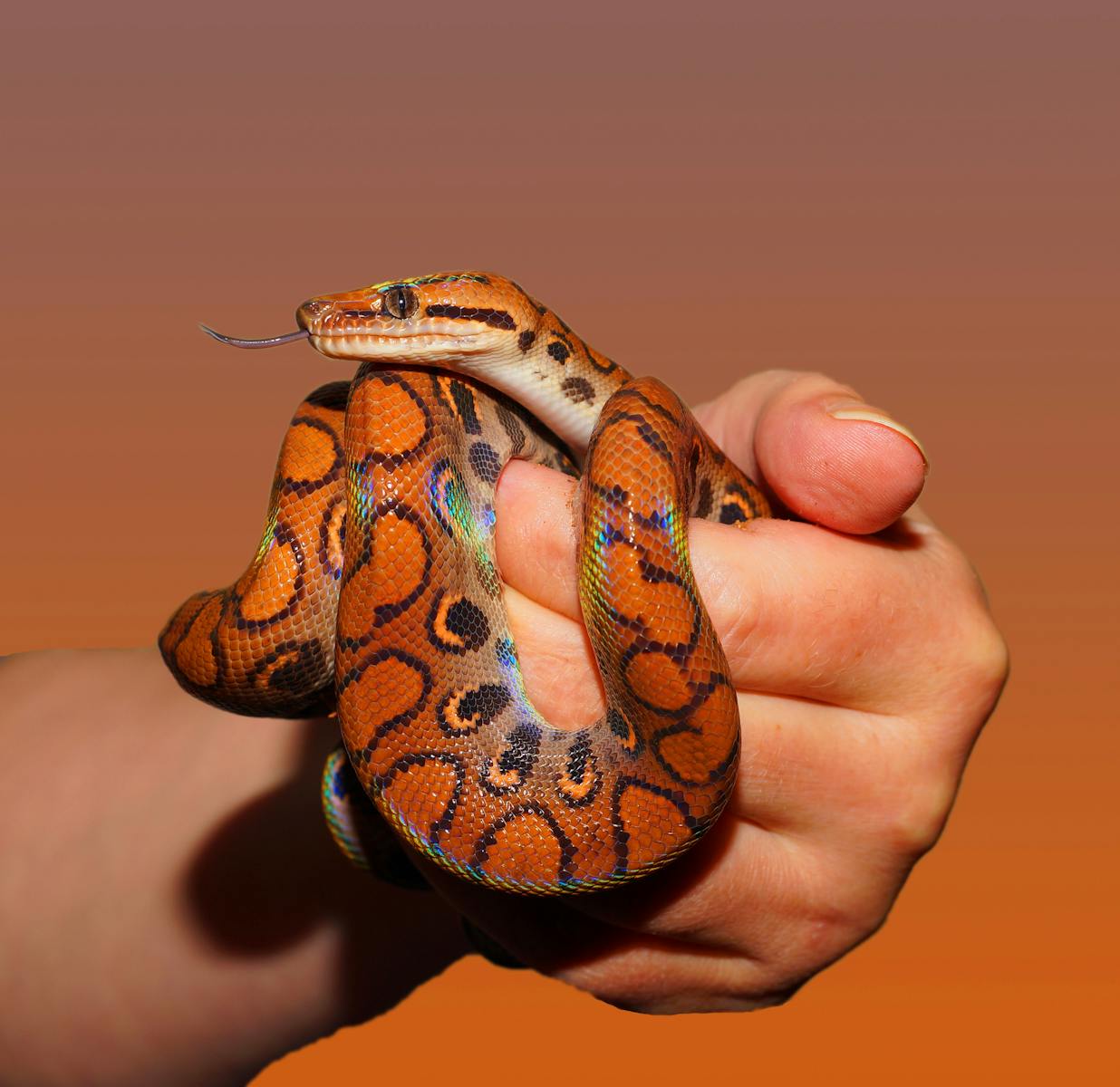
The rainbow water snake (Enhydris enhydris) is another species frequently found beneath floating vegetation throughout Southeast Asia and the Indian subcontinent. These snakes display a remarkable range of coloration, from olive-brown to bright yellow-green, often with dark stripes running along their bodies. This color variation helps them blend perfectly with the dappled light filtering through aquatic plants, providing excellent camouflage from both predators and prey. Rainbow water snakes possess specialized valvular nostrils that can close underwater, allowing them to remain submerged among plant roots for extended periods while hunting. Their diet consists primarily of small fish, tadpoles, and aquatic invertebrates that shelter among the dense root systems of floating plants. Despite their venomous bite, which immobilizes small prey, they pose little threat to humans and prefer to flee rather than confront larger animals.
Evolutionary Adaptations for Aquatic Life
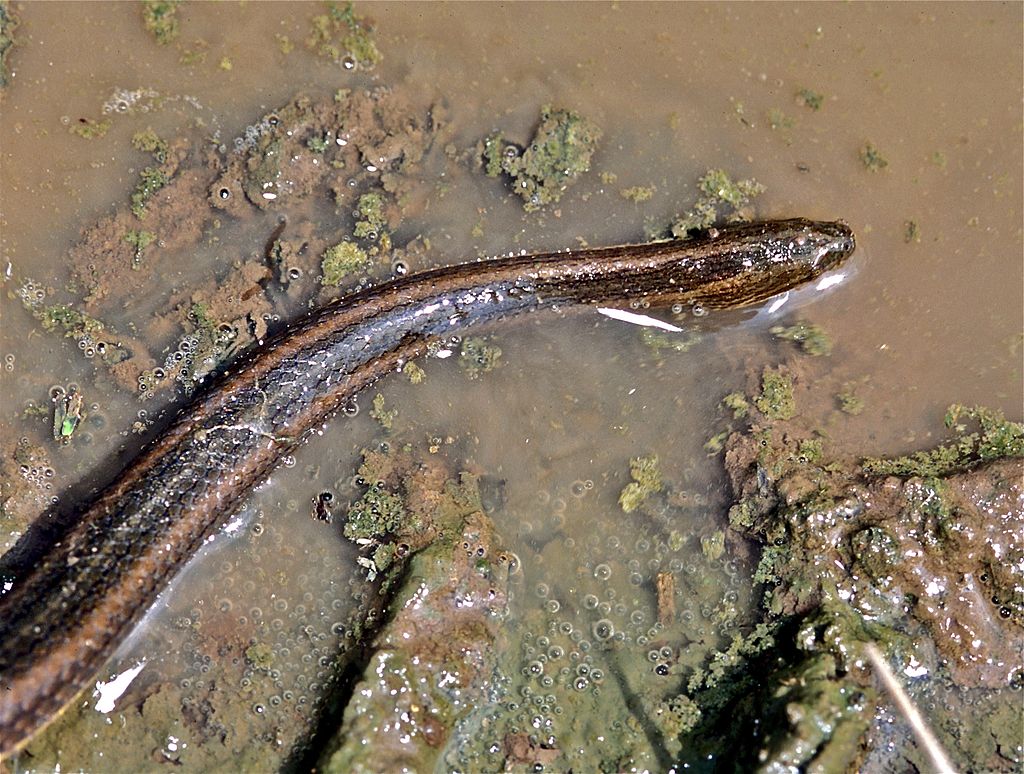
Snakes that dwell beneath floating vegetation have evolved remarkable physiological adaptations for their semi-aquatic lifestyle. Their bodies typically feature a laterally compressed tail that functions as an efficient paddle for swimming, allowing quick bursts of speed when pursuing prey or evading threats. Many species have developed specialized scale structures that create water-repellent surfaces, helping them maintain buoyancy and prevent waterlogging during extended periods underwater. Perhaps most impressive is their respiratory adaptation—these snakes can remain submerged for 30 minutes or more by slowing their metabolism and absorbing some oxygen through their skin. Some species, like the anaconda, have evolved nostril and eye placements higher on their heads, allowing them to remain almost completely submerged while still breathing and observing the world above water—a perfect adaptation for ambushing prey that approaches the floating vegetation from above.
Unique Hunting Techniques
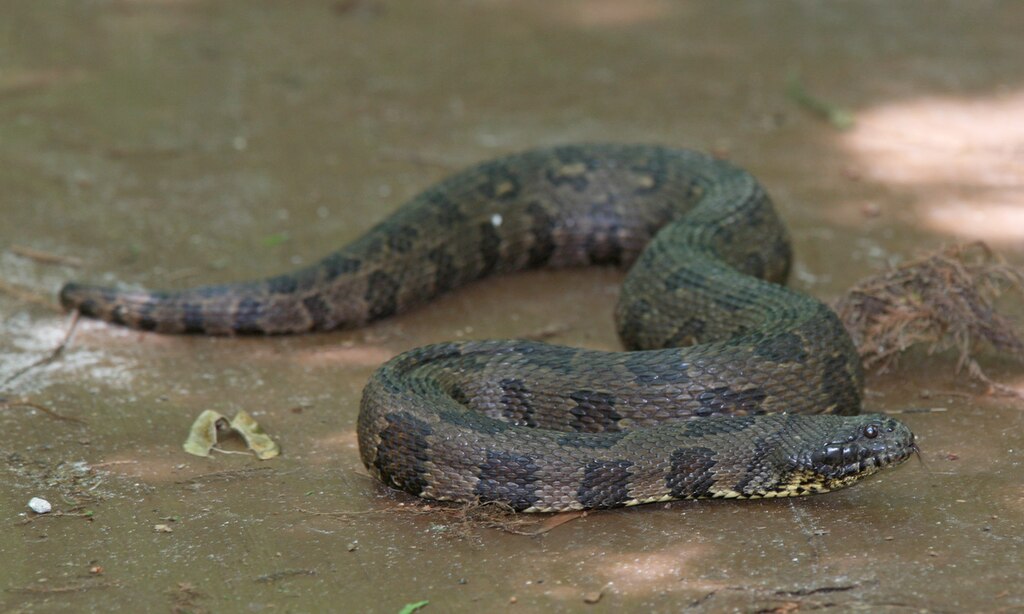
Snakes living beneath floating river plants have developed specialized hunting strategies uniquely suited to their aquatic environment. Many species employ a “sit-and-wait” approach, remaining motionless among plant roots until prey ventures too close, striking with remarkable precision in the three-dimensional underwater environment. Some species, like certain water snakes in the Nerodia genus, can detect the electrical impulses generated by fish muscles, allowing them to locate prey even in murky waters with poor visibility. Other species actively forage among the root systems, probing crevices with their sensitive tongues to locate hiding prey. Perhaps most fascinating is that some of these snakes have learned to exploit the boundary between air and water, striking upward to capture birds, insects, or small mammals that land on the floating vegetation. This versatility in hunting techniques allows these specialized predators to access multiple food sources within their unique ecological niche.
Reproduction Strategies in Floating Habitats
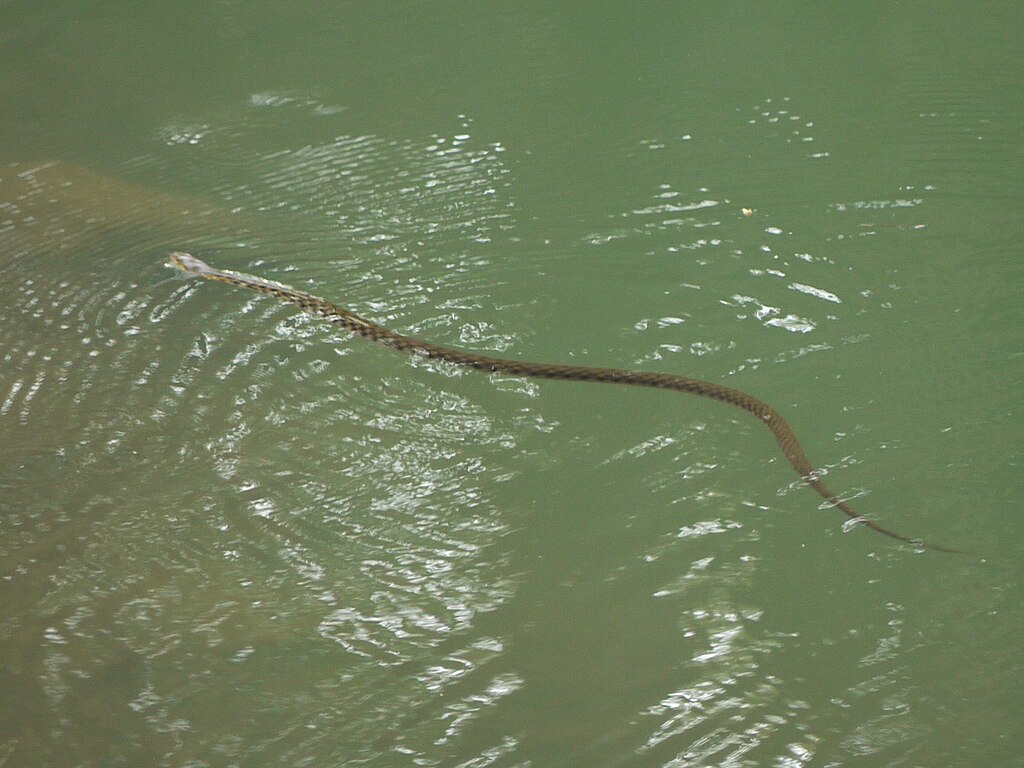
The reproductive biology of snakes beneath floating vegetation reflects fascinating adaptations to their aquatic lifestyle. Many species have evolved viviparity (live birth) rather than egg-laying, allowing females to remain in their aquatic habitat throughout pregnancy without needing to find suitable terrestrial nesting sites. This reproductive strategy provides greater protection for developing offspring in unpredictable water environments where flooding or drought might destroy eggs. Some species give birth to exceptionally large litters—certain water snakes producing 30 or more young in a single breeding event—which helps offset the high mortality rate in juvenile snakes. Newborns are immediately independent, already equipped with the instincts and physical adaptations needed to hunt among the floating vegetation. Mating often occurs beneath the protective cover of floating plants, where males locate receptive females through chemical cues detected by their highly sensitive vomeronasal organ.
The South American Water Cobra
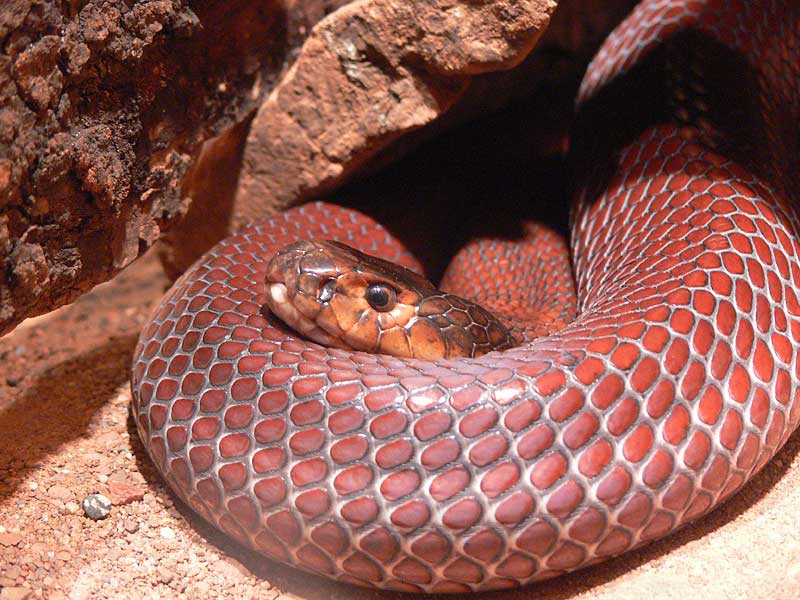
The South American water cobra (Hydrodynastes gigas), also known as the false water cobra, represents one of the most impressive snake species associated with floating vegetation in South American wetlands, particularly in the Amazon and Pantanal regions. Growing up to 2.5 meters in length, these snakes possess a remarkable ability to flatten their neck ribs when threatened, creating a hood similar to true cobras despite not being closely related. Their diet is extraordinarily diverse, including fish, amphibians, other reptiles, and even small mammals that venture onto floating vegetation mats. Water cobras are excellent swimmers that patrol the boundaries between floating plant islands, occasionally basking on top of vegetation but quickly retreating beneath when disturbed. Although venomous, their mild toxin is primarily used to subdue prey rather than for defense, making them relatively safe for researchers to study compared to other large venomous species.
Predators and Threats in a Vulnerable Environment
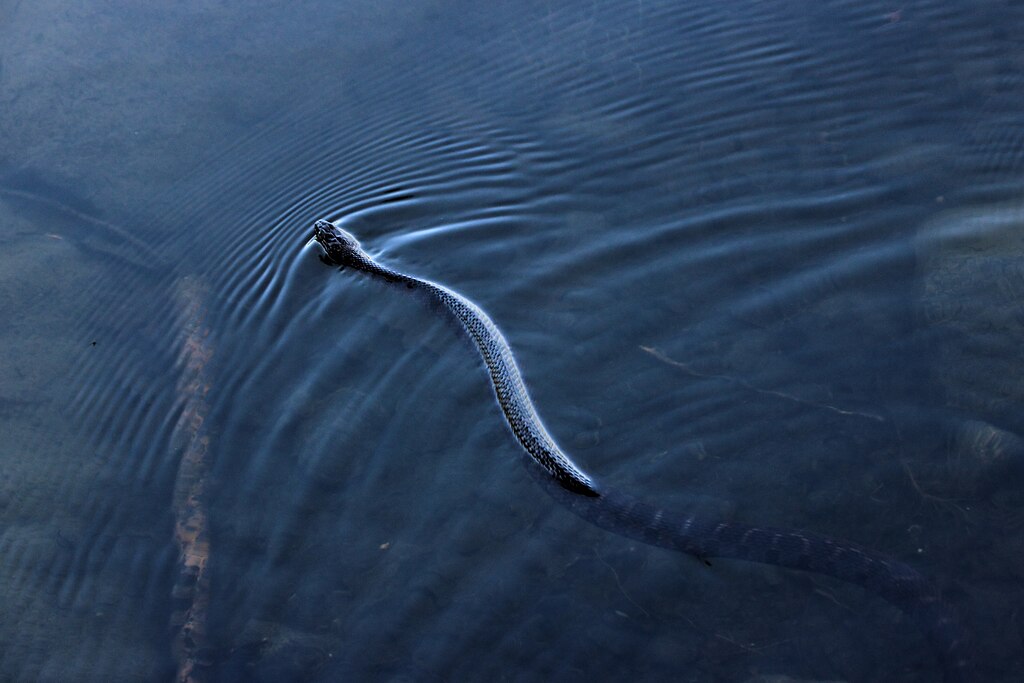
Despite being accomplished predators themselves, snakes living beneath floating vegetation face numerous natural threats. Wading birds like herons and egrets possess remarkable visual acuity and can spot snakes moving beneath transparent water, striking with pinpoint accuracy. Larger fish species, caiman, and other reptiles may prey on smaller water snakes, particularly juveniles who haven’t yet mastered the art of camouflage and stealth. Human activities pose perhaps the greatest threat, with wetland drainage, water pollution, and excessive harvesting of floating plants destroying critical habitat. Climate change introduces additional stressors, as shifting precipitation patterns alter water levels and temperatures, potentially disrupting breeding cycles and prey availability. Invasive species introductions, particularly aggressive fish that compete for the same prey base, further complicate the survival challenges these specialized snakes face in their increasingly vulnerable floating habitats.
The Amazon’s Floating Meadow Specialists
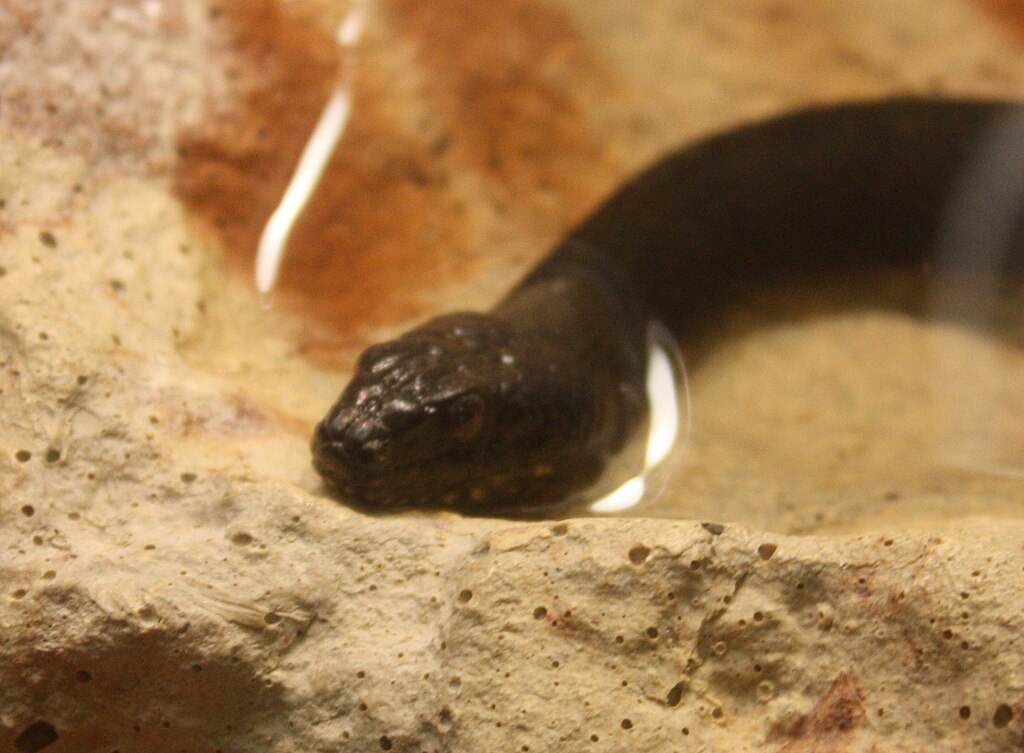
The Amazon basin hosts a remarkable diversity of snake species specially adapted to life beneath floating vegetation, particularly in the region’s unique “floating meadows.” These expansive mats of water hyacinth, water lettuce, and grasses can cover hectares of water surface, creating island-like environments with their own distinct ecosystems. Species like the green anaconda (Eunectes murinus) frequently utilize these floating meadows, with juveniles finding particular safety among the dense root systems while hunting smaller prey. The Amazon water snake (Helicops angulatus) is perfectly adapted to this environment with keeled scales that help it move efficiently through tangled vegetation. During the annual flood cycles of the Amazon, these floating meadows become critical refuge habitats for many species, expanding during high water and contracting during dry seasons. Research indicates these floating habitats may support greater snake biodiversity than adjacent terrestrial areas, highlighting their conservation significance in maintaining reptile populations throughout the Amazon basin.
Ecological Importance as Predator and Prey

Snakes living beneath floating vegetation play a crucial ecological role in maintaining the health and balance of freshwater ecosystems. As mid-level predators, they help control populations of fish, amphibians, and invertebrates that might otherwise experience boom-and-bust cycles without natural regulation. Their feeding activities create trophic cascades that influence water quality, as they often target prey species that would otherwise overgraze algae or consume excessive amounts of zooplankton. While hunting, these snakes inadvertently disturb the root systems of floating plants, which helps oxygenate the water column and prevents stagnation in dense vegetation mats. As prey themselves for larger predators, they transfer energy up the food chain, supporting populations of birds, mammals, and larger reptiles. This ecological interconnectedness makes them valuable bioindicators of ecosystem health—their presence or absence often signaling broader environmental changes affecting aquatic habitats.
Human Interactions and Cultural Significance
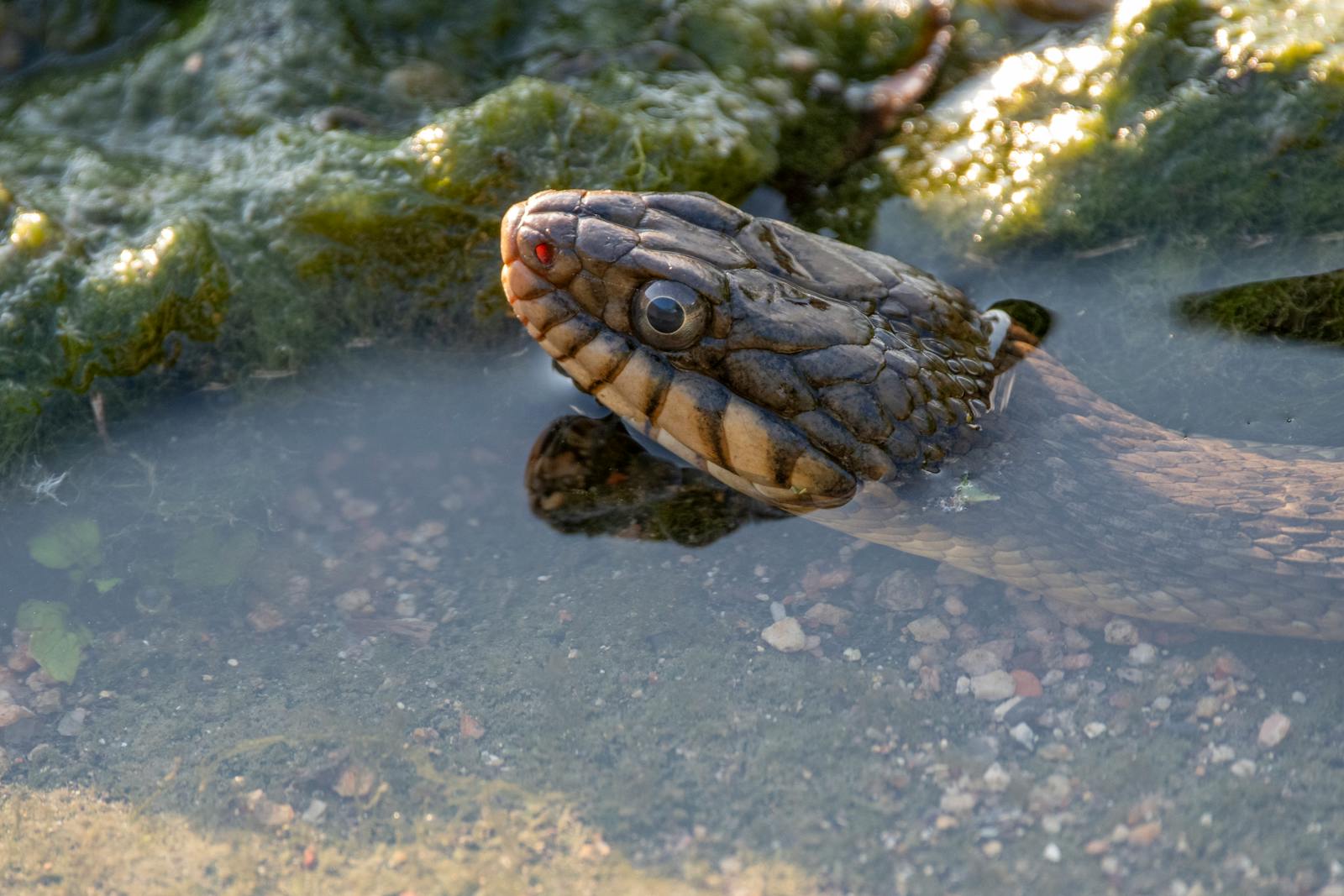
Throughout history, water snakes living among floating vegetation have figured prominently in human cultures sharing these aquatic environments. In parts of Southeast Asia, species like the tentacled snake were traditionally harvested for medicinal purposes, their bodies believed to possess healing properties for respiratory ailments. Many indigenous Amazonian communities recognize these snakes as important spiritual entities associated with water spirits and incorporate their imagery into traditional art and mythology. Some cultures view water snakes as harbingers of rainfall or flooding, their increased activity signaling environmental changes that communities needed to prepare for. In modern times, sustainable ecotourism has developed around viewing these fascinating reptiles in their natural habitats, providing economic incentives for conservation. Unfortunately, negative perceptions and fear of snakes generally has sometimes resulted in needless killing of these largely harmless species, highlighting the need for educational outreach about their ecological importance.
Conservation Challenges and Efforts
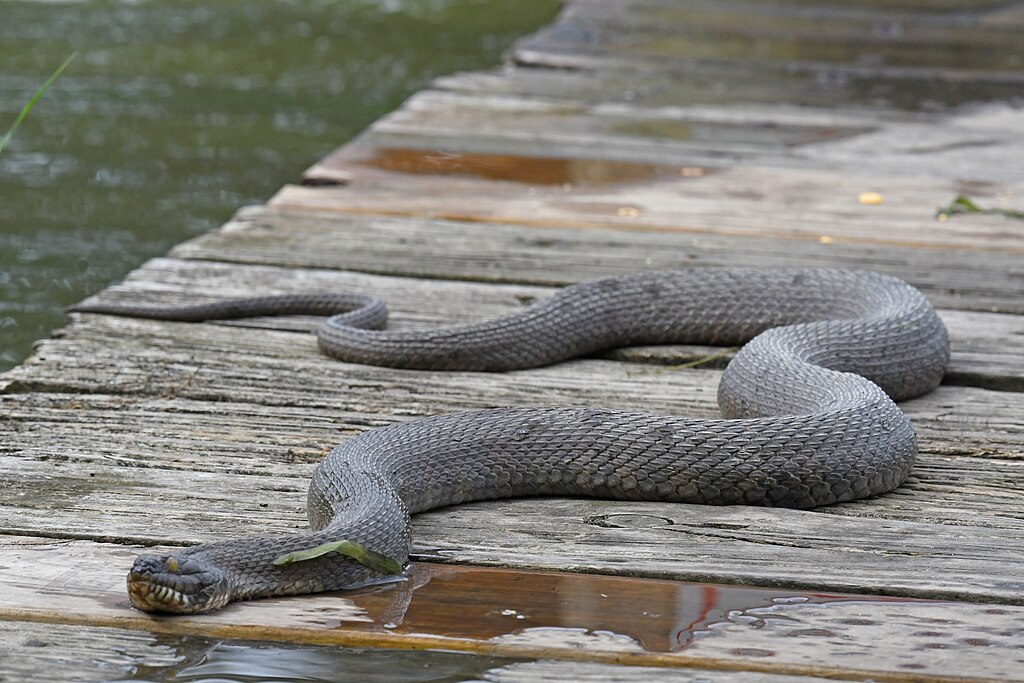
Snakes dwelling beneath floating vegetation face mounting conservation challenges as wetland habitats globally experience unprecedented degradation. Water pollution from agricultural runoff, industrial waste, and urban development introduces toxins that can concentrate in these predators through bioaccumulation, affecting reproduction and survival. Invasive plant management poses a particular dilemma, as efforts to control aggressive non-native floating plants like water hyacinth sometimes involve mechanical removal or herbicides that simultaneously destroy snake habitat. Climate change threatens to alter water temperature regimes and precipitation patterns critical to the life cycles of these specialized reptiles. Conservation efforts increasingly focus on holistic watershed management approaches that recognize the importance of floating vegetation communities as critical wildlife habitat. Some zoological institutions have developed captive breeding programs for particularly threatened species, while field researchers work to better document population trends and habitat requirements to inform protection strategies.
Future Research and Discoveries

The mysterious world beneath floating vegetation remains ripe for scientific discovery, with researchers continually uncovering new aspects of snake adaptation and behavior in these environments. Advances in underwater filming technology have recently allowed unprecedented documentation of hunting strategies previously only theorized, revealing complex predatory behaviors that evolved over millions of years. Genetic research is beginning to map how different water snake populations have diverged and adapted to specific floating plant communities across their range, potentially identifying cryptic species previously unrecognized by science. Bioacoustic studies are exploring how some species may detect prey through subtle vibrations in the water, adding another dimension to our understanding of their sensory capabilities. Climate change research is increasingly focused on predicting how these specialized reptiles might respond to shifting aquatic conditions, with some evidence suggesting certain adaptable species may extend their ranges while others face contraction. The continued exploration of these hidden underwater ecosystems promises to reveal fascinating new insights into one of nature’s most specialized predator-habitat relationships.
As we’ve explored, the snakes that dwell beneath floating river plants represent remarkable examples of evolutionary specialization. Their unique adaptations for hunting, breathing, and reproducing in this challenging interface between water and air showcase nature’s ingenuity. From the Amazon’s floating meadows to Southeast Asia’s lily-covered ponds, these serpents have carved out a precarious niche that is increasingly threatened by human activities and environmental change. Understanding and protecting these fascinating creatures requires preserving the delicate floating plant ecosystems they depend upon. As we face a future of changing climates and habitats, the story of these hidden underwater hunters reminds us that sometimes nature’s most extraordinary adaptations exist just beneath the surface, waiting to be discovered and protected.

